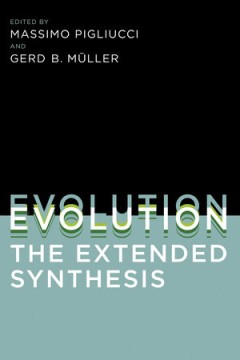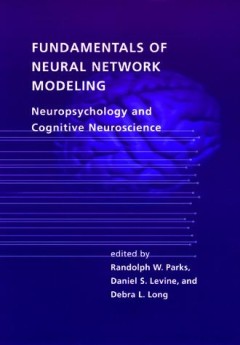Filter by

Trees of the brain, roots of the mind
"The human brain is often described as the most complex object in the universe. Tens of billions of nerve cells-tiny tree-like structures--make up a massive network with enormous computational power. In this book, Giorgio Ascoli reveals another aspect of the human brain: the stunning beauty of its cellular form. Doing so, he makes a provocative claim about the mind-brain relationship. If each n…
- Edition
- -
- ISBN/ISSN
- 9780262329026
- Collation
- 1 online resource (xiv, 232 pages) :illustrations
- Series Title
- -
- Call Number
- -

Tourism and Conservation-based Development in the Periphery
This open access book applies a social ecological systems (SES) lens to conservation-based development in Patagonia, bringing together authors with historical, contemporary, and future-oriented perspectives in order to increase understanding of the social and environmental implications of nature-based tourism and other forms of conservation-based territorial development. By focusing on Patagoni…
- Edition
- -
- ISBN/ISSN
- 978-3-031-38047-1
- Collation
- XXXIV, 468
- Series Title
- -
- Call Number
- -

Sex in Cetaceans
Sex in Cetaceans provides an up-to-date review of multi-faceted aspects related to mating and reproduction in toothed and baleen whales. This open access book begins with discussions of sexual selection and anatomical traits related to mating and diversity between the sexes. The functions of non-conceptive copulations are reviewed as are different research techniques applied to explore sex in c…
- Edition
- -
- ISBN/ISSN
- 978-3-031-35650-6
- Collation
- IX, 619
- Series Title
- -
- Call Number
- -

Umami
This Open Access book covers the concept of umami, the unique taste imparted by the amino acid glutamate, was first described in 1908 by Dr. Kikunae Ikeda of Tokyo University. Over the past century, hundreds of studies have explored the mechanistic underpinnings of the taste, leading to the characterization of the umami taste receptor in 2002. How this fifth basic taste figures into nutrition a…
- Edition
- -
- ISBN/ISSN
- 978-3-031-32691-2
- Collation
- XIII, 198
- Series Title
- -
- Call Number
- -

Ecosystem Restoration through Managing Socio-Ecological Production Landscapes…
This open access book is a compilation of case studies that provide useful knowledge and lessons that derive from on-the-ground activities and contribute to policy recommendations, focusing on the relevance of social-ecological production landscapes and seascapes (SEPLS) to ecosystem restoration. Building on the concept of SEPLS, the Satoyama Initiative promotes landscape approaches as integrat…
- Edition
- -
- ISBN/ISSN
- 978-981-99-1291-9
- Collation
- XXII, 288
- Series Title
- -
- Call Number
- -

Rangeland Wildlife Ecology and Conservation
This open access book reviews the importance of ecological functioning within rangelands considering the complex inter-relationships of production agriculture, ecosystem services, biodiversity, and wildlife habitat. More than half of all lands worldwide, and up to 70% of the western USA, are classified as rangelands—uncultivated lands that often support grazing by domestic livestock. Th…
- Edition
- -
- ISBN/ISSN
- 978-3-031-34036-9
- Collation
- XI, 1023
- Series Title
- -
- Call Number
- -

Evolution, the Extended Synthesis
Outgrowth of a meeting of the "Altenberg 16" at the Konrad Lorenz Institute for Evolution and Cognition Research in Altenberg, Austria, in July 2008. Cf. pref.In this volume, 16 leading evolutionary biologists and philosophers of science survey the conceptual changes that have emerged since Huxley's landmark publication, not only in such traditional domains of evolutionary biology as quantitati…
- Edition
- -
- ISBN/ISSN
- 9780262315142
- Collation
- 1 online resource (viii, 495 pages) :illustrations
- Series Title
- -
- Call Number
- -

Artificial Chemistries
The field of Artificial life (ALife) is now firmly established in the scientific world, but it has yet to achieve one of its original goals: an understanding of the emergence of life on Earth. The new field of artificial chemistries draws from chemistry, biology, computer science, mathematics, and other disciplines to work toward that goal. For if, as it has been argued, life emerged from pirmi…
- Edition
- -
- ISBN/ISSN
- 9780262329460
- Collation
- 1 online resource (xv, 555 pages) :illustrations (some color)
- Series Title
- -
- Call Number
- -

Fundamentals of neural network modeling : neuropsychology and cognitive neuro…
Over the past few years, computer modeling has become more prevalent in the clinical sciences as an alternative to traditional symbol-processing models. This book provides an introduction to the neural network modeling of complex cognitive and neuropsychological processes. It is intended to make the neural network approach accessible to practicing neuropsychologists, psychologists, neurologists…
- Edition
- -
- ISBN/ISSN
- 0585108358
- Collation
- 1 online resource (xiii, 428 pages) : illustrations.
- Series Title
- -
- Call Number
- 001 FUN

Gene regulation and metabolism : postgenomic computational approaches
As exciting as the new field of genomics is, it has not yet produced a basic conceptual change in biology. The fundamental problems remain: the origin of life, cell organization, the pathways of differentiation, aging, and the molecular and cellular capabilities of the brain. What has occurred is an explosion of molecular information obtained by genomic sequences, which will soon be followed by…
- Edition
- -
- ISBN/ISSN
- 9780262270649
- Collation
- 1 online resource (x, 310 pages) : illustrations.
- Series Title
- -
- Call Number
- 570 GEN
 Computer Science, Information & General Works
Computer Science, Information & General Works  Philosophy & Psychology
Philosophy & Psychology  Religion
Religion  Social Sciences
Social Sciences  Language
Language  Pure Science
Pure Science  Applied Sciences
Applied Sciences  Art & Recreation
Art & Recreation  Literature
Literature  History & Geography
History & Geography